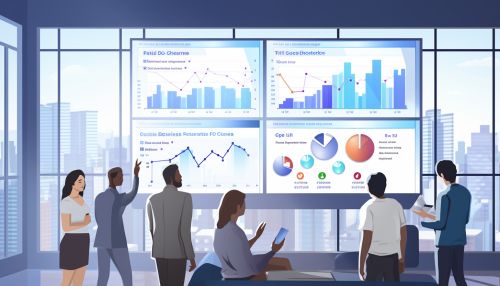Demography
Introduction
Demography is the scientific study of human populations, including their size, structure, and distribution, and the changes in these aspects due to births, deaths, migration, and aging. The term is derived from the Greek words 'demos' meaning people and 'graphy' meaning description or measurement. Demography is a fundamental discipline in the social sciences, providing data and insights that inform policy decisions in areas such as health, education, housing, and social security.
History of Demography
The study of demography has a long history, with roots in antiquity. Ancient civilizations, such as the Greeks and Romans, conducted censuses to determine the size of their populations for taxation and military purposes. However, the modern discipline of demography did not emerge until the 18th century, with the work of John Graunt, a British statistician who is often considered the father of demography. Graunt's work, which involved the systematic analysis of birth and death records, laid the foundation for the development of life tables and the calculation of mortality rates, key tools in demographic analysis.
Demographic Data and Methods
Demographic data is primarily collected through censuses, surveys, and the registration of vital events such as births, deaths, and marriages. These data sources provide information on the size, structure, and distribution of populations, as well as on demographic events and their determinants.
Demographers use a variety of methods to analyze this data, including life table analysis, cohort analysis, and population projection. Life table analysis is used to calculate mortality rates and life expectancy, while cohort analysis examines the experiences of specific groups of people born in the same period. Population projection, on the other hand, is used to predict future population size and composition based on current trends in fertility, mortality, and migration.


Key Concepts in Demography
Demography is centered around several key concepts, including population size, birth rate, death rate, migration rate, and age structure.
The population size is the total number of individuals in a population. The birth rate, or fertility rate, is the number of births per 1,000 individuals in a population per year. The death rate, or mortality rate, is the number of deaths per 1,000 individuals in a population per year. The migration rate is the difference between the number of people entering and leaving a population. The age structure of a population is the distribution of individuals by age, usually presented as a population pyramid.
Another important concept in demography is the demographic transition, a theory that describes the shift from high birth and death rates to low birth and death rates as a society develops from a pre-industrial to an industrialized economic system.
Applications of Demography
Demography has wide-ranging applications in both the public and private sectors. In the public sector, demographic data and analysis inform policy decisions in areas such as health, education, housing, and social security. For example, understanding the age structure of a population can help policymakers plan for future needs in terms of schools, healthcare facilities, and retirement homes.
In the private sector, businesses use demographic data to identify target markets, assess demand for products and services, and make location decisions. For example, a company selling baby products might target areas with high birth rates, while a healthcare provider might focus on areas with a large elderly population.
Challenges and Future Directions in Demography
Demography faces several challenges and opportunities in the 21st century. One major challenge is the aging of the population in many developed countries, which has significant implications for social security systems, healthcare provision, and the labor market. Another challenge is the impact of migration, both within and between countries, on population size and composition.
At the same time, advances in technology and data collection methods offer new opportunities for demographic research. For example, the use of big data and machine learning techniques can provide more detailed and timely information on population trends and dynamics.
